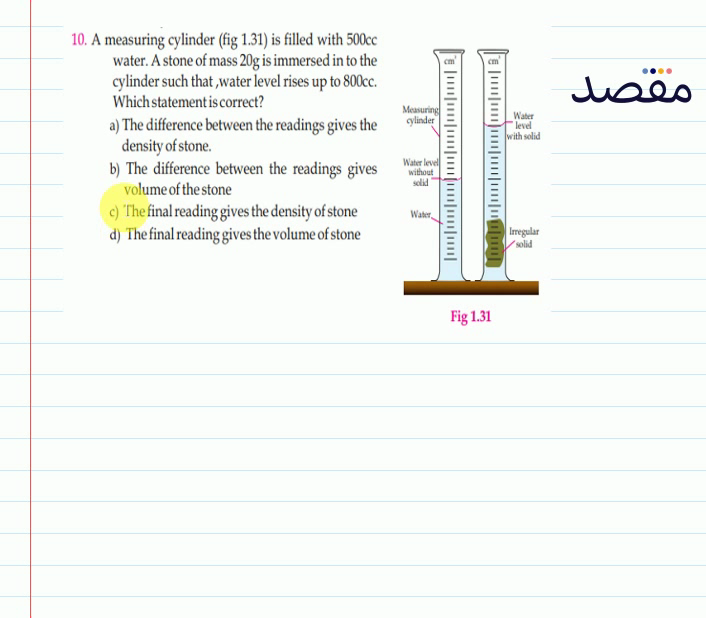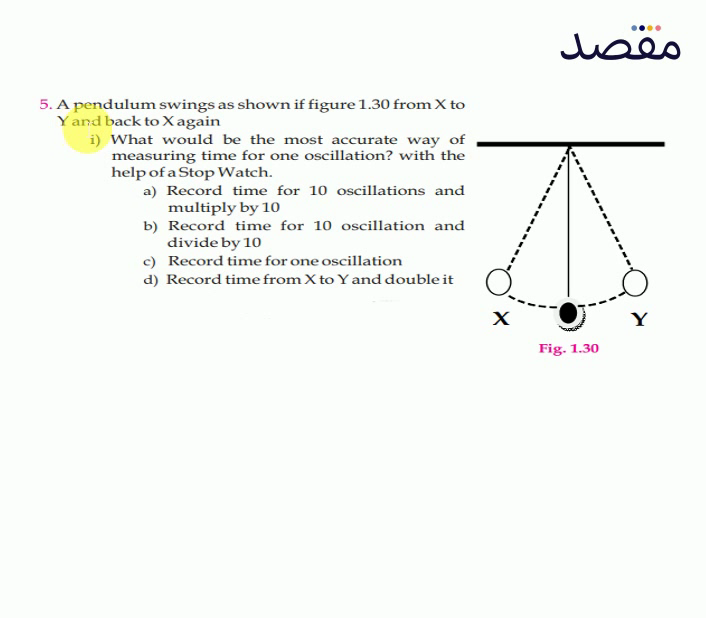Measuring small intervals of time is crucial for scientific, technological, and practical reasons, providing insights into fundamental aspects of the universe and allowing for the development of advanced technologies. It helps us understand processes that occur at the atomic and molecular level, dynamics of chemical reactions, and rapid biological processes.
Additionally, it is necessary for experiments and laboratory works that deal with phenomena lasting for a very short time, where measuring over a long time would not provide useful information. Devices such as chronoscopes and atomic clocks are used to accurately measure these small time intervals.
Importance Of Measuring Small Time Intervals
Measuring extremely small intervals of time is crucial across various disciplines, allowing us to gain insights into fundamental aspects of the universe, develop advanced technologies, and study rapid biological processes.
Scientific Insights
Studying processes that occur at small time scales enables scientists to understand the behavior of atoms and molecules, as well as the dynamics of chemical reactions, providing valuable insights into the natural world.
Technological Advancements
Measuring small time intervals is essential for developing high-speed electronics, communication systems, and other advanced technologies, contributing to the progress and innovation in the technological realm.
Medical And Biological Applications
Understanding processes that occur at small time scales is essential for studying rapid biological processes and developing new medical treatments, ultimately improving human health and well-being.
Instruments For Measuring Small Time Intervals
In the realm of science, technology, and various industries, the need to measure extremely small time intervals is paramount for accurate data collection and advancements. Different instruments are utilized for this precise task, each offering unique capabilities and accuracy levels.
Atomic Clocks
- Utilized in scientific research and global timekeeping
- Operate based on the vibrations of atoms to provide unparalleled accuracy
- Measuring time in picoseconds and beyond
Chronoscope
- Perfect for measuring short durations with high precision
- Commonly used in laboratory experiments and sports events
- Capable of measuring time intervals in milliseconds or microseconds
Electrical Stopwatches
- A versatile tool for measuring small time intervals
- Widely used in various applications due to ease of use and accuracy
- Provides readings in milliseconds, microseconds, or even nanoseconds
Challenges In Measuring Small Time Intervals
Measuring small time intervals presents various challenges due to the complexities involved in capturing and analyzing these fleeting moments. In this section, we will explore some of the significant challenges that arise when attempting to measure such small time intervals.
Uncertainty Principle
The uncertainty principle, formulated by Werner Heisenberg, is a fundamental concept in quantum mechanics that poses a challenge to measuring small time intervals accurately. According to this principle, there is an inherent limit to our ability to simultaneously measure certain pairs of physical properties, such as position and momentum or energy and time. In the case of measuring short time intervals, this principle suggests that there will always be a level of uncertainty associated with the measurement. This uncertainty can introduce errors and limitations in our understanding of the exact duration of these small intervals.
Short Wavelength Light Measurement
Another challenge arises when measuring small time intervals using short wavelength light. As time intervals become shorter, the frequency of oscillation increases, requiring measurement tools capable of capturing extremely fast events. However, traditional optical instruments often have limitations in accurately measuring such high frequencies. The diffraction of light and the finite response time of detectors pose constraints on the accuracy and precision of the measurements. Overcoming these limitations requires specialized equipment specifically designed for capturing and analyzing short time intervals.

Credit: maqsad.io
Applications In Daily Life
Understanding small time intervals is crucial for scientific progress and technological advancements. It plays a vital role in areas like physics, chemistry, and biology, offering insights into the behavior of atoms and molecules, dynamics of reactions, and rapid biological processes.
This knowledge helps in developing high-speed technologies and enhancing our understanding of the natural world.
Scheduling And Time Management
Efficient scheduling and effective time management are essential factors in our daily lives. Measuring small intervals of time allows us to break down our tasks and allocate specific time slots to each of them. By accurately measuring these small time intervals, we can plan our day better, ensuring that we make the most of our time and increase our productivity. Whether it’s managing our personal to-do lists or organizing work-related assignments, measuring small time intervals allows us to prioritize tasks, set deadlines, and track our progress more effectively.
Meeting Appointments
Meeting appointments play a crucial role in maintaining professional relationships. Timeliness and punctuality are highly valued in both personal and professional settings. Measuring small time intervals enables us to precisely schedule meetings and ensure that we arrive at the designated location on time. By accurately measuring these intervals, we can avoid unnecessary delays, inconveniences, and conflicts. Whether it’s a client meeting, a job interview, or a casual catch-up with friends, measuring small time intervals helps us honor our commitments and build trust and credibility.
Punctuality In Work And Education
Punctuality is a virtue highly regarded in both work and educational environments. Meeting project deadlines, attending classes, and submitting assignments on time are some of the key requirements for success. Measuring small intervals of time enables us to adhere to these deadlines, ensuring our work or assignments are completed within the specified time frame. By being punctual, we not only showcase our professionalism and commitment but also create a positive impression on our peers, superiors, and professors. Measuring small time intervals allows us to manage our workload efficiently and perform to the best of our abilities.
Significance In Scientific Research
Measuring extremely small intervals of time is crucial in scientific research for understanding processes at the atomic and molecular level. This enables insights into fundamental aspects of the universe, aids in the development of high-speed technologies, and is essential for studying rapid biological processes in medicine and biology.
Understanding Rapid Phenomena
When it comes to scientific research, measuring small intervals of time holds immense significance. One of the key reasons for this is gaining a better understanding of rapid phenomena. Certain processes occur at incredibly small time scales, such as nanoseconds or even femtoseconds, which cannot be accurately observed or analyzed without precise time measurements.
By measuring small intervals of time, scientists can delve into the intricate details of these rapid phenomena and gain valuable insights into the fundamental aspects of the universe. For instance, in the fields of physics, chemistry, and astronomy, studying processes that happen at incredibly small time scales can provide deeper understanding of atomic and molecular behavior, as well as the dynamics of chemical reactions.
Insights Into Atomic And Molecular Behavior
Understanding the behavior of atoms and molecules is crucial in various scientific disciplines. By measuring small intervals of time, researchers can observe and analyze atomic and molecular interactions in real-time. This enables them to unravel the fundamental mechanisms underlying chemical reactions, biological processes, and physical phenomena.
The ability to measure small time intervals also facilitates the study of ultrafast events such as electron movement and energy transfer. These insights into atomic and molecular behavior contribute to advancements in areas like material science, drug development, and renewable energy research.

Credit: www.scribd.com
Role In High-speed Technologies
Measuring extremely small intervals of time is crucial for a range of scientific and technological advancements. It offers valuable insights into fundamental aspects of the universe, aids in studying rapid biological processes, and is pivotal in developing high-speed electronics and communication systems, among other advanced technologies.
High-speed Electronics
In high-speed electronics, measuring small intervals of time is crucial for the development and operation of advanced electronic devices and systems.
The ability to measure and respond to tiny time intervals is essential for achieving ultra-fast processing speeds and ensuring the reliability and performance of electronic components.
Communication Systems
Communication systems also rely on the precise measurement of small time intervals to facilitate rapid data transmission and reception.
Accurate time measurements contribute to the synchronization of complex network operations, ensuring efficient and reliable communication across various platforms and devices.
Contribution To Medical Science
Measuring small intervals of time is crucial for various scientific and practical reasons, including its significant contribution to medical science. This precise measurement plays an essential role in understanding rapid biological processes and in the development of medical treatments.
Studying Rapid Biological Processes
Measuring small intervals of time allows scientists to study and observe rapid biological processes at a molecular and cellular level. It enables researchers to gain insights into the dynamics of cellular activities, such as protein synthesis, enzyme reactions, and cell signaling, which occur within milliseconds or even femtoseconds.
Development Of Medical Treatments
The precise measurement of small time intervals contributes to the development of medical treatments by providing a deeper understanding of physiological and pathological processes. It aids in examining the efficacy and rapid response of drugs, as well as in studying the feedback mechanisms of biological systems, ultimately leading to the advancement of medical interventions.

Credit: maqsad.io
Future Implications Of Measuring Small Time Intervals
Advancements In Precision Instruments
With the ability to measure extremely small time intervals, precision instruments are advancing rapidly. High-tech devices like atomic clocks and quantum sensors are becoming more precise, enabling scientists to delve into the microcosm of time with unprecedented accuracy.
Potential Innovations In Various Fields
- Physics: Understanding complex processes at the subatomic level.
- Chemistry: Unlocking insights into rapid chemical reactions.
- Astronomy: Studying cosmic events with incredible temporal precision.
- Technology: Enhancing the speed and efficiency of electronics and communication systems.
- Medicine: Investigating rapid biological phenomena for medical advancements.
Frequently Asked Questions Of Why Do We Need To Measure Small Interval Of Times?
Why Do We Need To Measure Time In Short?
Measuring small time intervals is crucial for scientific, technological, and practical reasons. It provides insights into fundamental aspects of the universe, aids in the development of advanced technologies, and helps in studying rapid biological processes. Understanding processes at small time scales allows for a deeper understanding of the natural world.
What Is The Advice Used For Measuring Small Time Intervals?
To measure small time intervals, use a chronoscope, electric stopwatch, or atomic clocks for precise and accurate measurements. This is crucial for scientific research, technological advancements, and understanding rapid biological processes. For example, it aids in studying atomic and molecular behavior, chemical reactions, and developing high-speed technologies.
What Is Used To Measure Short Interval Of Time?
A chronoscope is used to measure short intervals of time in laboratories or sports.
Why Should We Have Different Units Of Time?
Having different units of time helps in accurately measuring and understanding processes in various scientific, technological, and practical fields. It aids in studying phenomena at small time scales, crucial for scientific advancements and technological developments.
Conclusion
Measuring small time intervals aids in understanding scientific processes, technological advancements, and biological functions. It offers insights into atoms, chemical reactions, and high-speed technologies. By delving into time scales like nanoseconds, we unravel the mysteries of the natural world and foster innovation across various fields.
